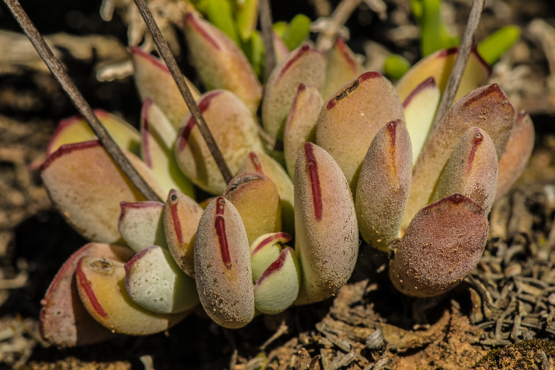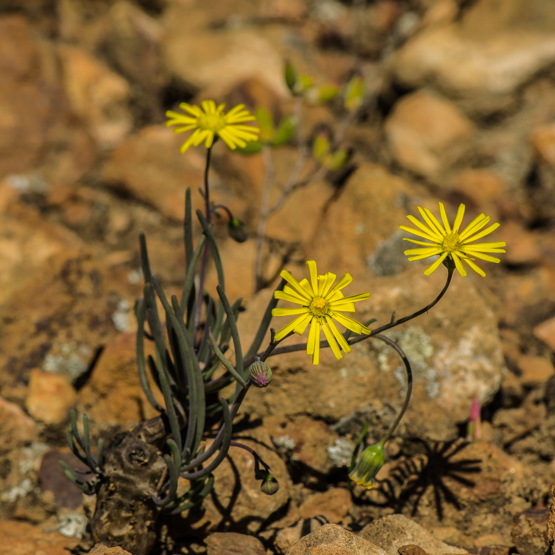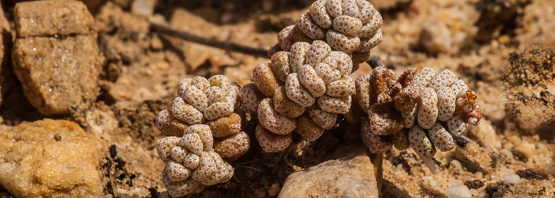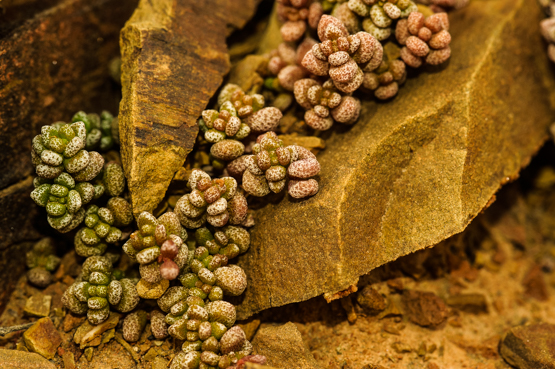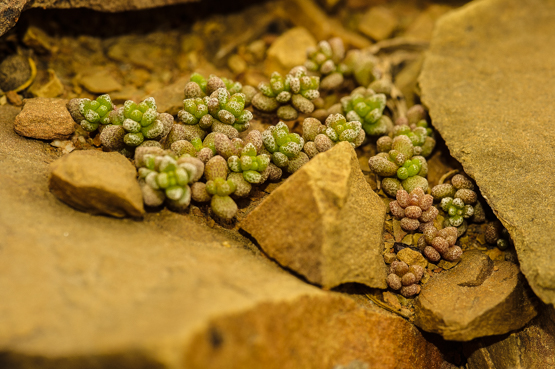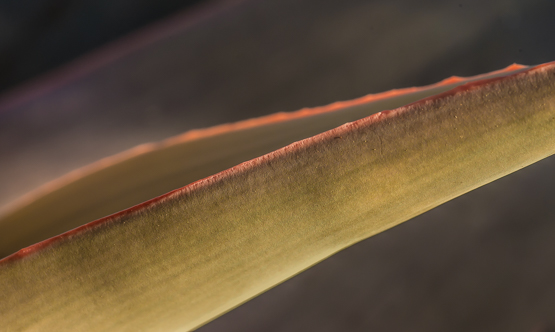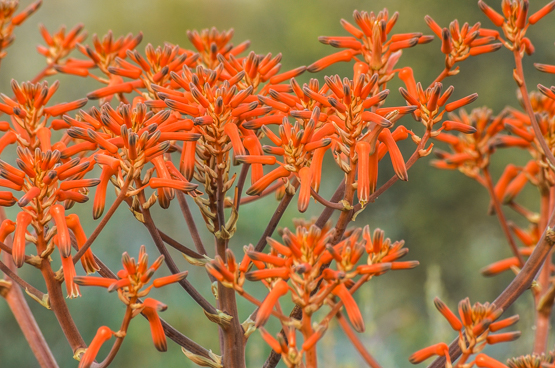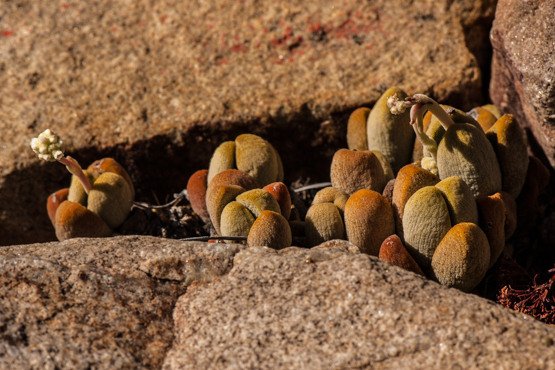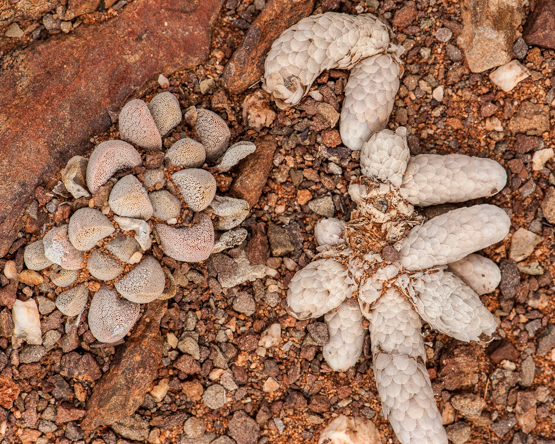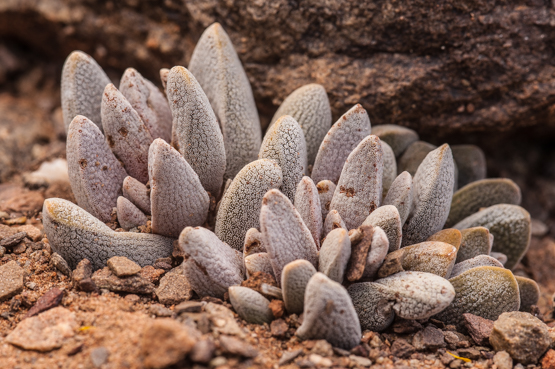Although this is a very variable species with several synoniems, it is nevertheless easy to identify.
The plants are low, spreading shrublets with branches to 25 cm long, often rooting at nodes and bearing leaves 15-60 mm long and 4-13 mm wide, yellowish-green to glaucous*, usually with a red tip or margin.
The flowers vary in colour from yellowish and orange to darkish pink and deep red, with a tube 5-8 mm long and lobes 10-15 mm long. They appear mainly in October-February, but also after rain at other times.
Usually the plants occur on stony slopes and flats; they are often abundant in the shade of small bushes. They are widespread from southwestern Namibia to the Little Karoo and extending into the Eastern Cape.
*glaucous: covered with a thin greyish-white to bluish-green layer of wax.



